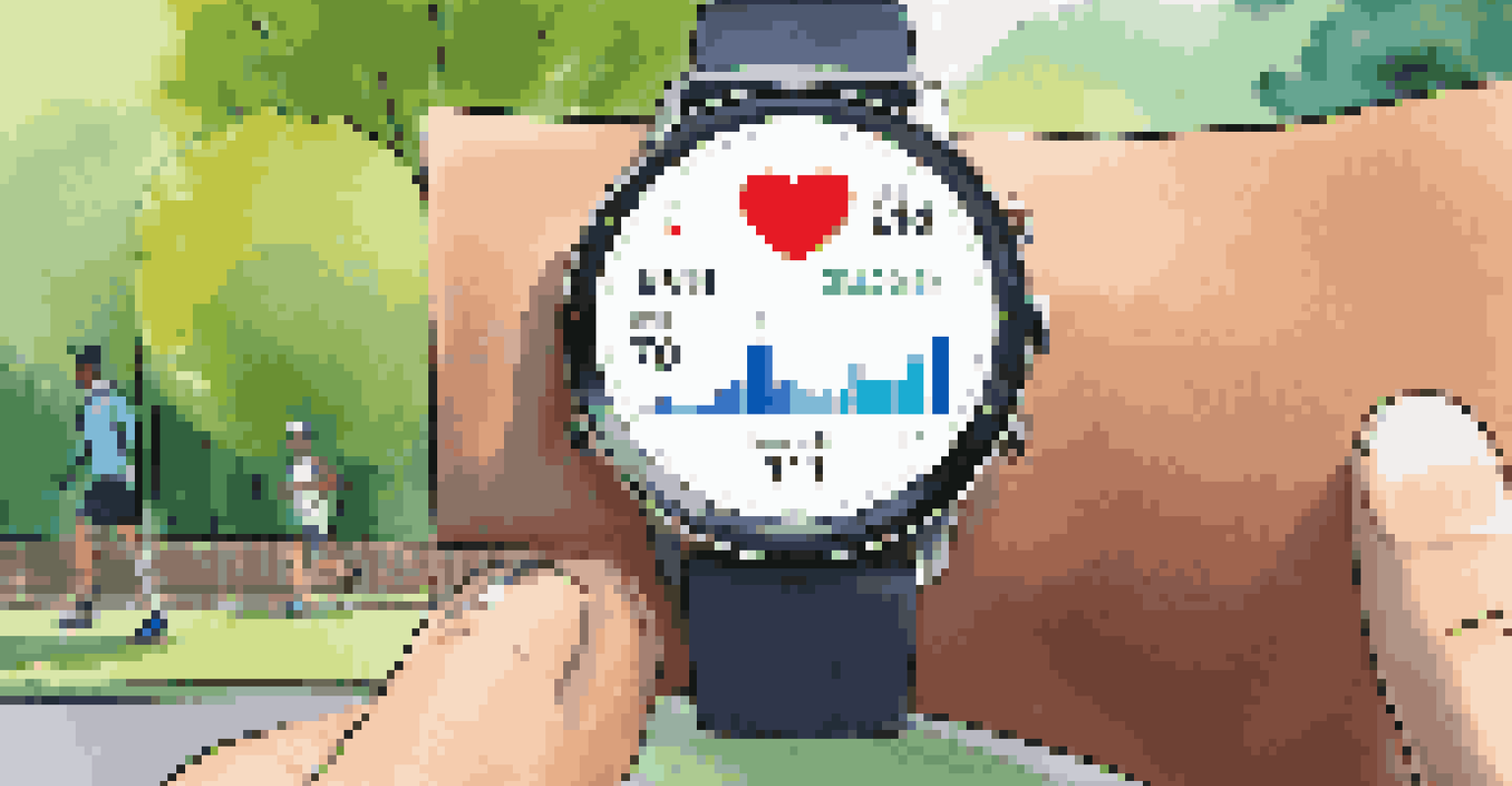5G Technology: The Future of Connected Devices and Wearables

Understanding 5G: What Makes It Different?
5G technology is the fifth generation of wireless communication, offering faster speeds and lower latency compared to its predecessors. This means that data can be transmitted much more quickly, enabling a seamless experience for users. The key difference lies in its ability to connect a massive number of devices simultaneously without compromising performance, a crucial feature for our increasingly connected world.
The great thing about technology is that it allows us to do things we couldn't do before. 5G is going to enable a whole new world of possibilities.
Imagine a busy highway during rush hour; 4G is like a two-lane road, while 5G is akin to a multi-lane superhighway. This enhancement allows for more devices to communicate at once, which is essential as more smart devices and wearables come into play. Whether it's smart home appliances or health-monitoring wearables, 5G paves the way for a more interconnected lifestyle.
With the introduction of 5G, the potential for innovation is limitless. From autonomous vehicles to advanced smart cities, the technology promises to transform how we interact with the world around us. It's not just about speed; it's about creating a robust ecosystem where devices can communicate and collaborate effortlessly.
How 5G Enhances Wearable Technology
Wearable devices, such as smartwatches and fitness trackers, benefit immensely from 5G technology. With increased bandwidth and reduced latency, wearables can deliver real-time data to users, enhancing their functionality. This means that everything from heart rate monitoring to navigation can be processed instantly, providing users with immediate feedback.

For instance, imagine a fitness tracker that not only records your heart rate but also analyzes your data in real-time to suggest personalized workouts. With 5G, this capability becomes a reality, allowing wearables to act almost like personal trainers on your wrist. This immediate responsiveness can motivate users to stay on track with their fitness goals.
5G Transforms Connectivity
5G technology enables faster speeds and connects numerous devices simultaneously, enhancing user experiences across various sectors.
Moreover, 5G enables wearables to connect to the cloud effortlessly. This allows for more complex data analysis and storage, making it easier to track long-term health metrics. As wearables evolve, 5G will play a vital role in ensuring they remain indispensable tools for health and wellness.
The Impact of 5G on Smart Homes
As 5G technology spreads, the concept of smart homes becomes more achievable and functional. The ability to connect multiple devices at high speeds means that everything from smart thermostats to security cameras can work together seamlessly. Imagine controlling your home environment with just a voice command or a tap on your smartphone, all made possible through the power of 5G.
5G is not just about speed; it's about creating a connected ecosystem that enhances our daily lives.
With 5G, devices can communicate with each other in real-time, allowing for automation that feels intuitive and responsive. For instance, your smart refrigerator could alert you when you’re low on groceries while your smart oven preheats based on your dinner plans. This level of interconnectedness makes daily life more convenient and efficient.
Additionally, enhanced security measures can be integrated into smart homes with 5G technology. For example, real-time video feeds from security cameras can be streamed without lag, allowing homeowners to monitor their property from anywhere in the world. This not only enhances peace of mind but also elevates the overall smart home experience.
The Role of 5G in Healthcare Innovation
5G technology stands to revolutionize the healthcare industry by enabling remote monitoring and telemedicine. With its fast data transfer capabilities, healthcare providers can monitor patients' vital signs in real-time, leading to quicker and more accurate decisions. This is particularly beneficial for patients with chronic conditions who require constant supervision.
For instance, imagine a patient wearing a smart health device that tracks their glucose levels. With 5G, healthcare professionals can receive alerts immediately if levels fluctuate, allowing them to intervene swiftly. This not only enhances patient care but also reduces the burden on healthcare facilities.
Wearables Benefit from 5G
With 5G, wearable devices can provide real-time data and immediate feedback, revolutionizing personal health and fitness monitoring.
Moreover, 5G can facilitate remote surgeries, where doctors can operate on patients from different locations using robotic systems. This unprecedented level of connectivity will change how medical care is delivered, making it more accessible and efficient, especially in underserved areas.
Challenges and Considerations of 5G Adoption
While 5G technology offers numerous advantages, its adoption is not without challenges. One of the primary concerns is the infrastructure required to support it. Unlike previous generations, 5G networks rely on a dense array of small cells to deliver their high-speed capabilities, which means significant investment and planning are needed.
Additionally, there are concerns about data privacy and security as more devices connect to the network. With an increase in connected devices, the potential for cyber threats also rises. It’s essential for manufacturers and service providers to prioritize data security measures to protect users' sensitive information.
Lastly, the digital divide remains a pressing issue. While urban areas may quickly embrace 5G, rural regions could lag behind due to infrastructure challenges. Ensuring equitable access to 5G technology will be crucial to its success and the benefits it can provide.
Future Trends in 5G and Connected Devices
As we look ahead, the future of 5G technology is bright and filled with exciting possibilities. One key trend is the integration of artificial intelligence (AI) with 5G, enabling smarter devices that learn and adapt to user behavior. This means that your connected devices will not only respond instantly but also anticipate your needs.
Another trend is the rise of Internet of Things (IoT) applications powered by 5G. From smart cities to connected vehicles, the potential for IoT is vast. For example, traffic lights that communicate with cars to optimize flow can reduce congestion and improve safety, showcasing how 5G can enhance urban living.
Challenges in 5G Adoption
Despite its advantages, 5G faces challenges including infrastructure requirements, data privacy concerns, and the digital divide.
Furthermore, as 5G networks become more widespread, we can expect more innovations in areas like augmented reality (AR) and virtual reality (VR). These technologies will benefit from the high-speed, low-latency environment that 5G provides, leading to immersive experiences that were previously unimaginable.
Conclusion: Embracing the 5G Revolution
In conclusion, 5G technology is set to transform our world in ways we are only beginning to comprehend. Its impact on connected devices and wearables is profound, enhancing everything from health monitoring to smart home functionalities. As we embrace this revolution, we must also address the challenges that come with it to ensure a smooth transition.
The future holds exciting possibilities, with innovations in healthcare, smart living, and beyond on the horizon. By harnessing the power of 5G, we can create a more connected, efficient, and responsive world. It's an opportunity we must seize with enthusiasm and responsibility.

Ultimately, as consumers and innovators, we have a role to play in shaping how 5G technology unfolds. By staying informed and engaged, we can ensure that the benefits of 5G are accessible to everyone, paving the way for a brighter, more connected future.